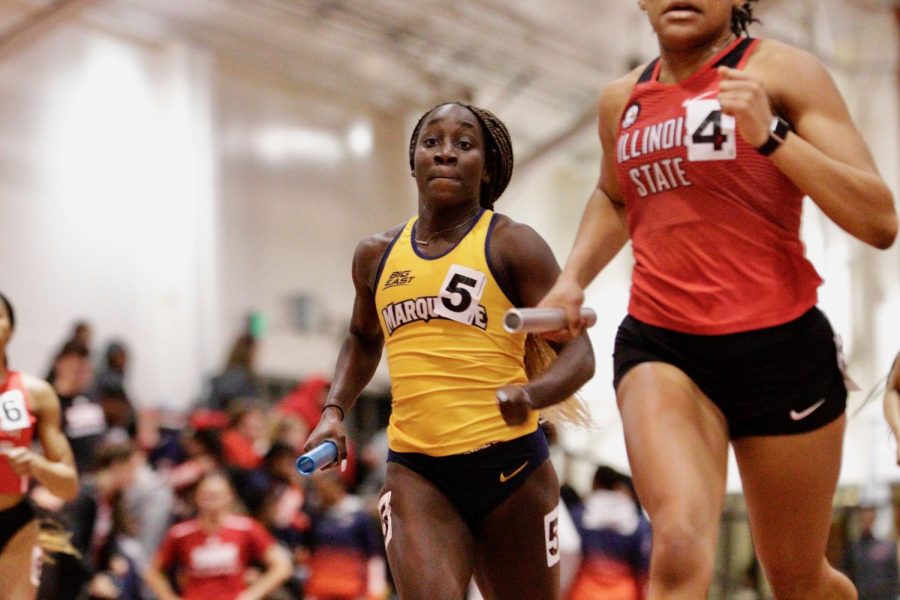 In a world where the only motor skill required is the ability to put one foot in front of the other, there must be something hidden beneath the surface that makes running more than just a calorie-burning hobby.
In a world where the only motor skill required is the ability to put one foot in front of the other, there must be something hidden beneath the surface that makes running more than just a calorie-burning hobby.
And there is. They’re called guts, cojones or another four-letter word we weren’t allowed to run in print.
It’s this extra helping of uncaged aggression that morphs cross country and track into a different kind of animal, because in a traditional sense, running isn’t a “sport” any more than Vanilla Ice is a rapper.
But that’s not a bad thing. Because while basketball and football are team sports measured by whoever has the most points, running is individualistic and lonely and measured by whoever has the most heart.
“In team sports you can rely on people. In track, it’s on you,” track and field coach Bert Rogers said. “And in team sports you have strength and conditioning, but track is strength and conditioning. It’s about pushing yourself through pain.”
The reason running isn’t considered a sport is because runners aren’t really athletes. People play basketball, but nobody plays running, which makes the competitors in cross country or track hard to define. What are they exactly? I would say that they’re gladiators, cerebral assassins and just a little bit crazy. OK, actually runners are full blown foaming mouth, padded room loco.
“To be successful you need to have the ability to endure punishment,” Rogers said. “There’s a big mental component to it. You need to be able to do things you thought were impossible.”
Take junior Mike O’Brien for instance. He runs the 400-meter hurdles, which is widely considered the hardest event in track. It’s the running equivalent of the death sentence. If sprinting full speed for a quarter of a mile while jumping over three-foot tall metal objects sounds like a good way to spend your weekend, you might want to give this event a try. If you would rather pass, don’t worry. That just means you’re still sane.
“The last 50 meters of the race you start to feel it, and you can tell what runners are breaking down,” O’Brien said. “The key is staying mentally tough. Those last 50 meters, nothing compares.”
Running is a blood sport in the same way boxing is — minus the face punching and ear biting, of course. With the exception of relays, running is always about going one-on-one to determine the victor. Surprisingly, the person who ends up with the bling isn’t always the fastest kid on the block.
“Running is about who has put the training in and who has the most drive,” O’Brien said.
It’s not that other sports are easy or, ahem, soft, but compared to the brutal training regimes and high intensity races of cross country or track, standing at a plate and swinging a piece of wood seems a little lame. Sure, other sports probably require more skill and precision, but that stuff is overrated. I don’t want excuses or rain delays. I want blood, sweat and the occasional reversal of fortunes at mile number three. Sorry if that got a little graphic.
What this whole thing comes down to is respect. Basketball and football players get all the glory, and sometimes rightfully so. But the runners in this world — at Marquette or anywhere else with pavement — have paid their dues. It’s time the most grueling and physically demanding competition in collegiate athletics started to get some props.
I know what you’re thinking. Running is boring, meets take forever and no one on Marquette’s cross country team or track teams are as dreamy as Tom Brady. That’s fine. If you don’t want to give credit where credit is due, I’m sure Rogers and company will survive. They don’t need your love because they know they’re real athletes in a world of prissy, pampered college stars.
After all, if running were any easier, they’d call it football.







